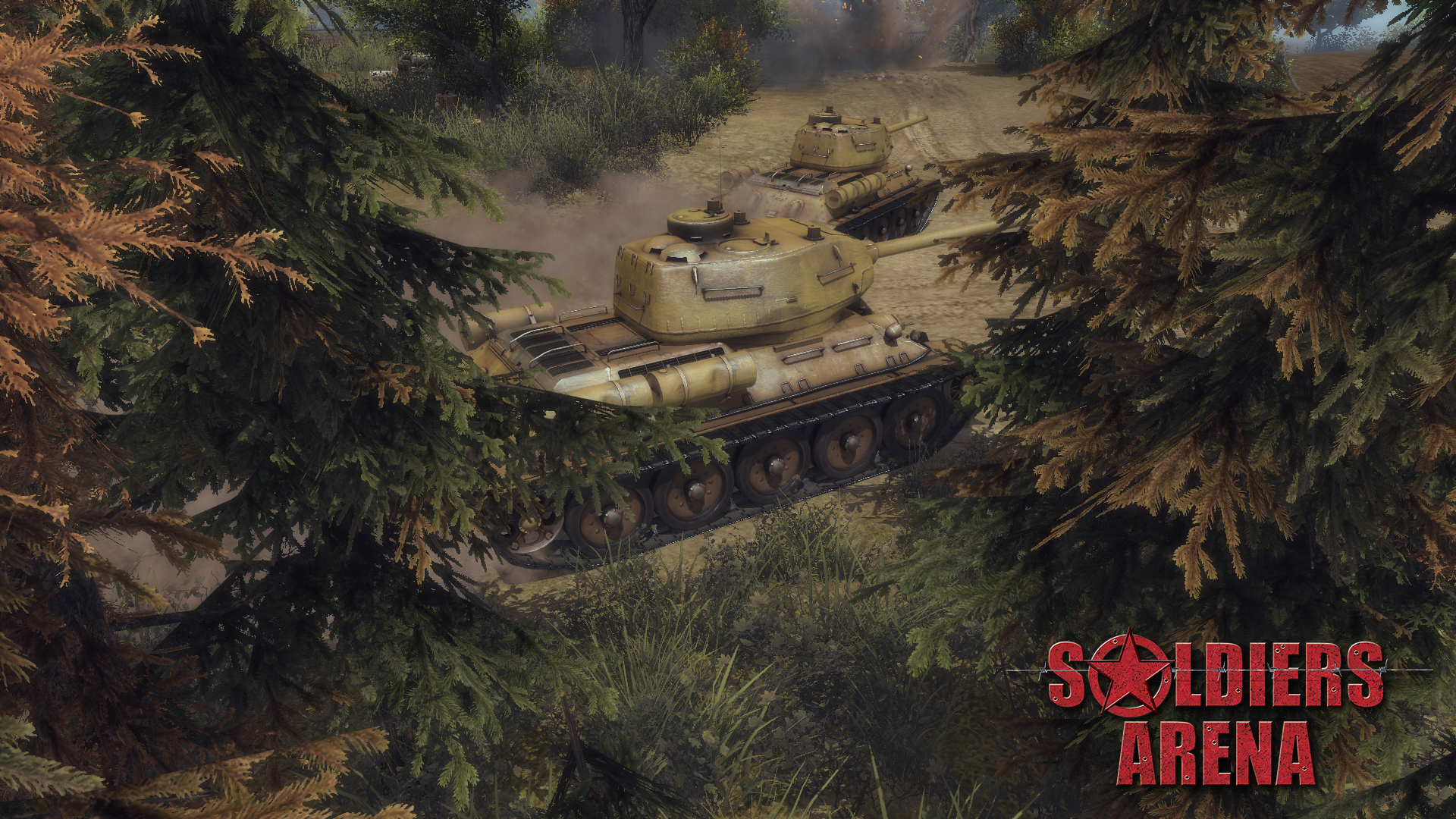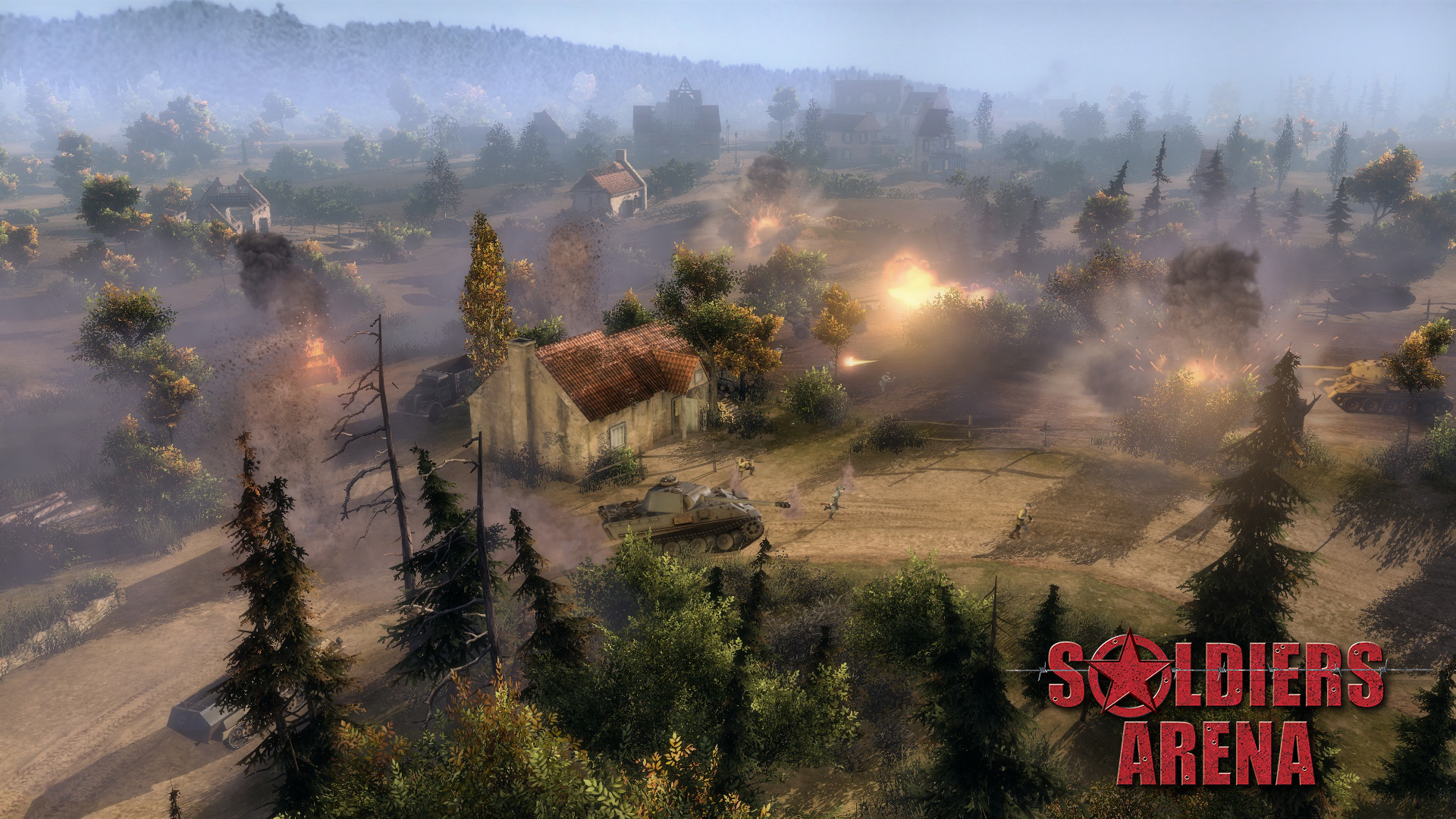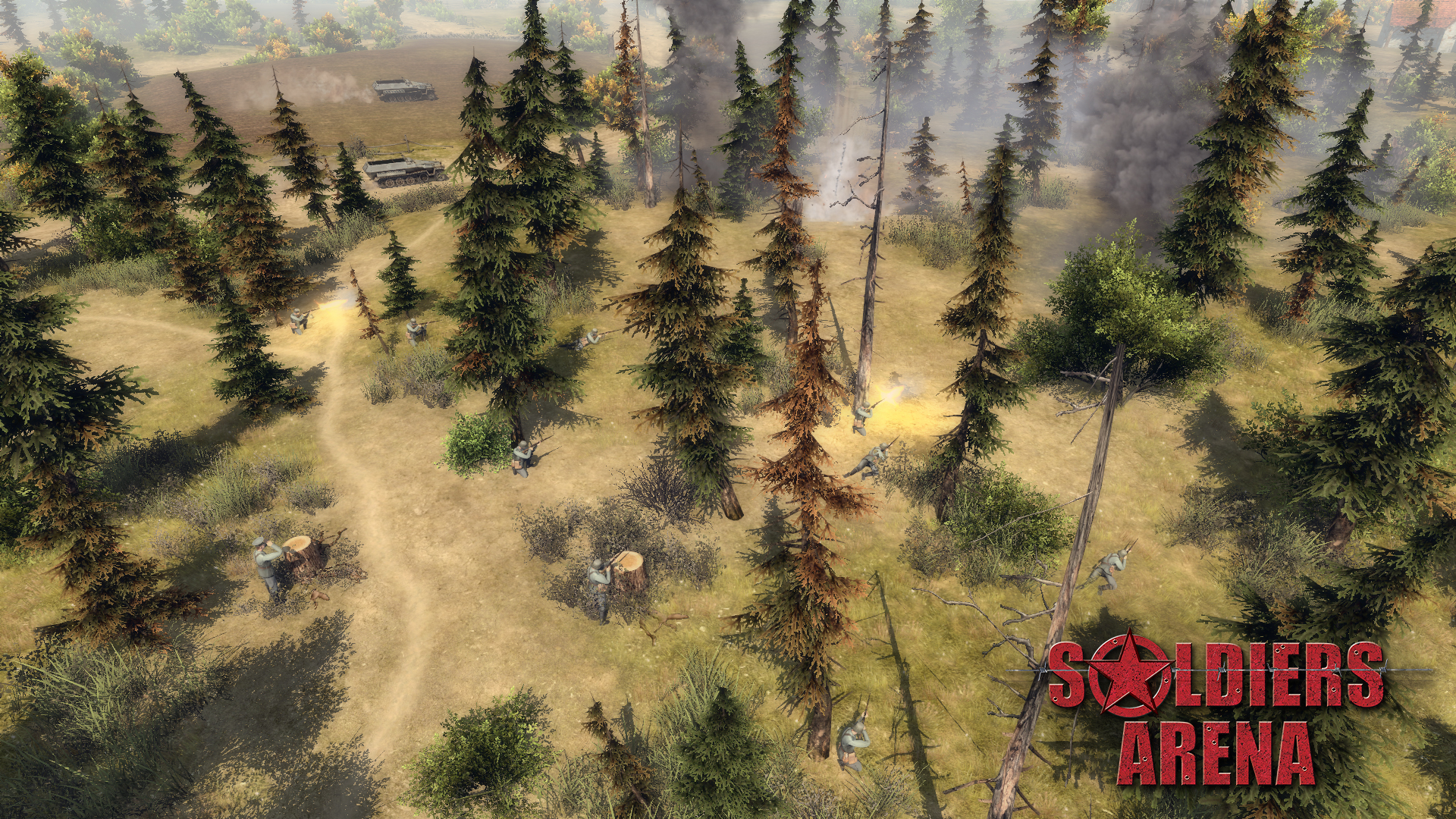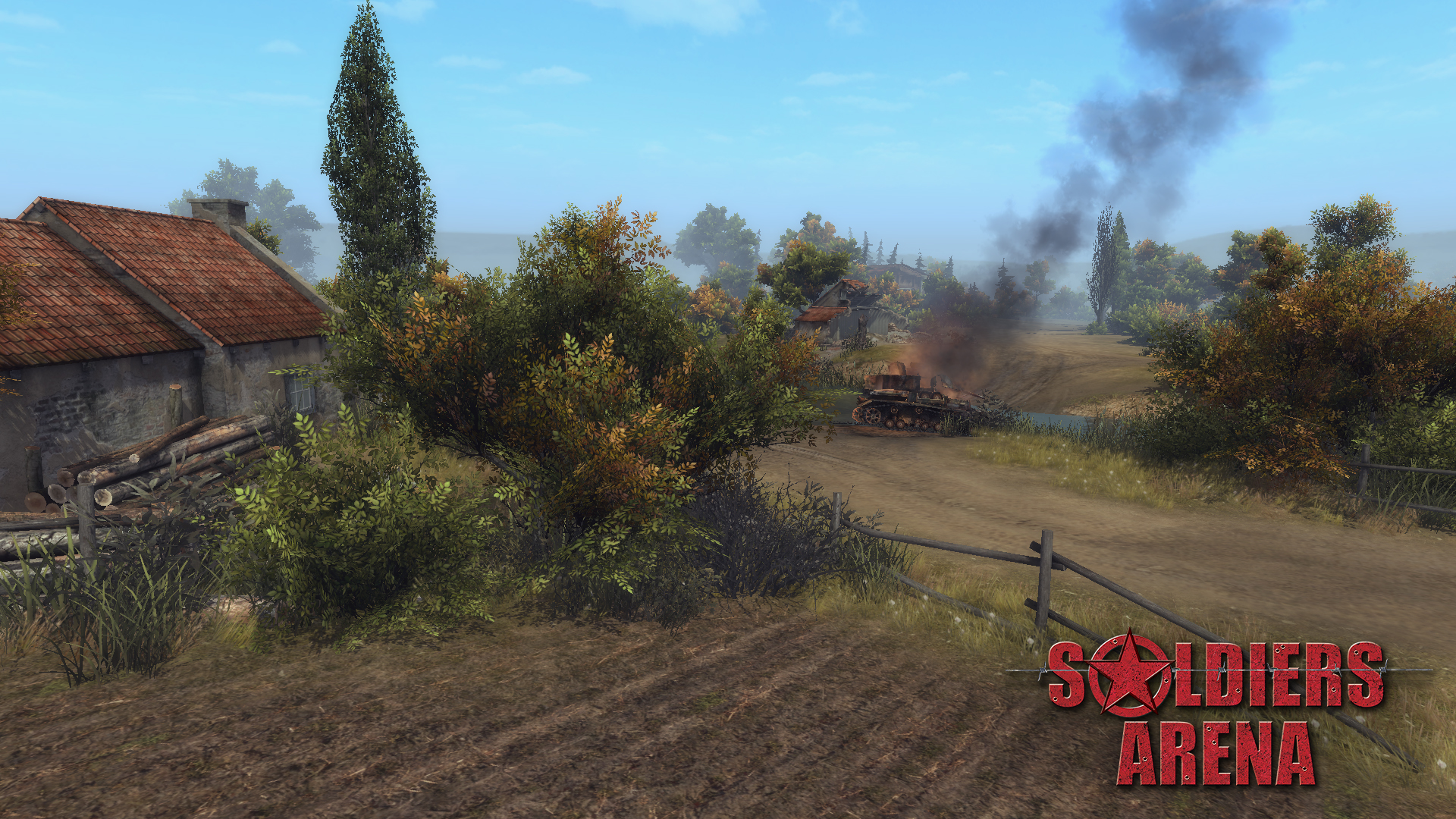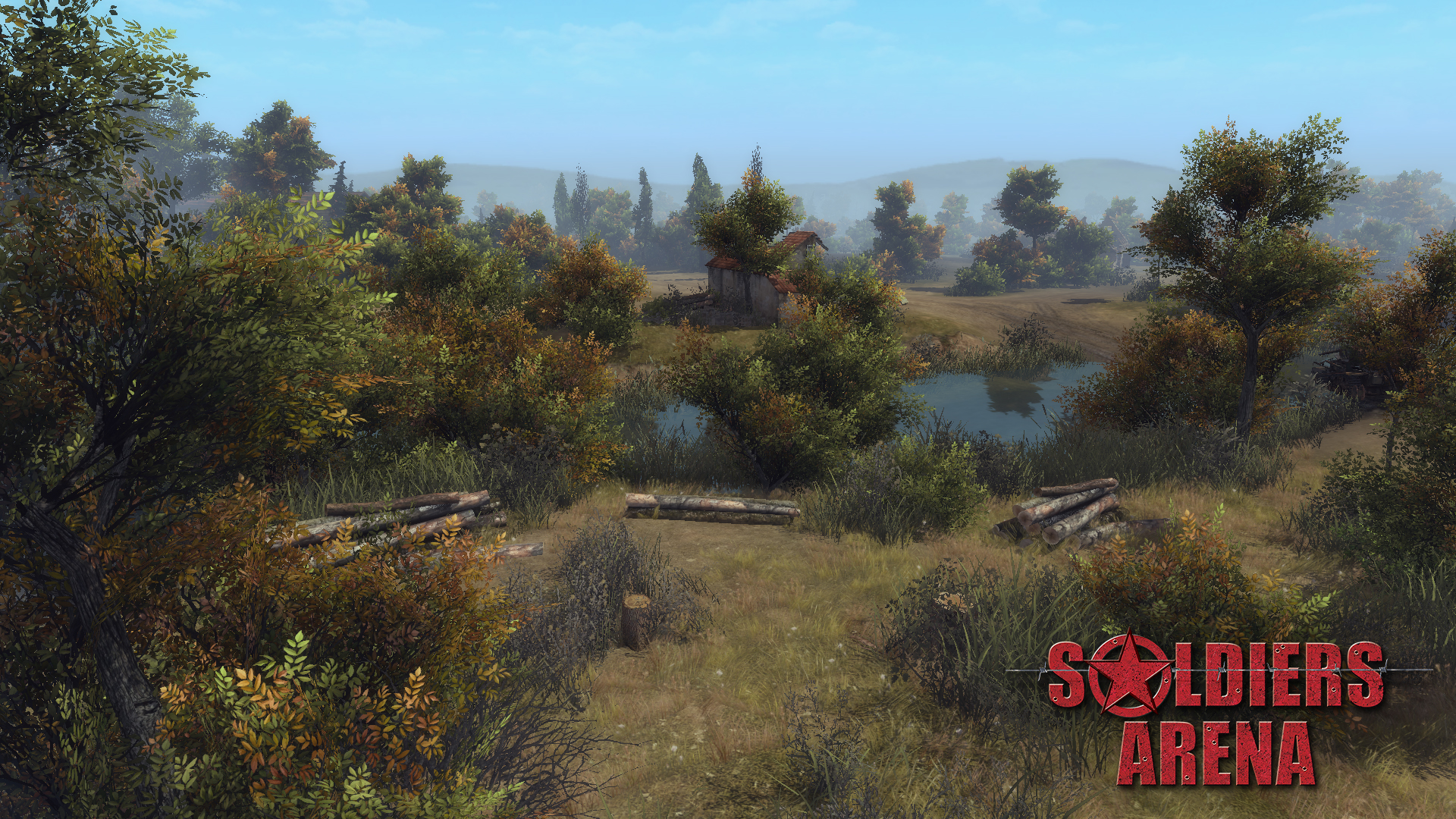Soldiers: Arena will take you to the battlefields driven by the largest and bloodiest conflict of all time - World War II. This is the height of war, this is the time for real heroes.
Both new and already battle-proven multiplayer gamemodes to the original tactical gameplay are waiting for you. Interactive destructible environments and the ability to direct-control any combat unit. Steam support: matchmaking, workshop, steamcloud. Redesigned graphics, models and special effects. Conceptual new interface and convenient control, new battlefields and new opportunities.
Both new and already battle-proven multiplayer gamemodes to the original tactical gameplay are waiting for you. Interactive destructible environments and the ability to direct-control any combat unit. Steam support: matchmaking, workshop, steamcloud. Redesigned graphics, models and special effects. Conceptual new interface and convenient control, new battlefields and new opportunities.
Features:
- Revival of the “Men of War/Soldiers” game series. This multiplayer tactical RTS absorbed the best of the original series, favourite of players all over the world.
- Huge roster of units. Within a single game session, players will have access to a large number of unique units for every nation: tanks, vehicles, infantry and artillery of various types.
- The “Direct Control” mode. This mode provides the ability to play from the third person for any unit in the player’s army. The movement of the unit, firing the various guns, control of ammunition types, etc. all relying and directly controlled by player and thus the game conveys tactical action in it’s very essence.
- Destructible interactive environments. During the battle almost any object of the game can be destroyed or set on fire. Furthermore, all objects, including craters from explosions, may be used as cover.
- Atmosphere and realism. Even in large-scale game battles, it is necessary to take into account factors such as the supply of fuel and ammunition of each single unit. The precense of inventories for each unit limits the number and size of transported objects. Guns’ accuracy and penetration decreases with distance. Tired soldiers reduce the movement speed during long crossings. The influence of these and many other factors makes possible to reproduce the battles of World War II with a adequate degree of realism, most involving the player into the atmosphere of heated battles of the past.
- Modular realistic damage system. Any vehicle, regardless of its type, is composed of a set of modules that can be broken or destroyed. Types of ammunition, characteristics of guns, shooting distance, angle of armor, armor plate thickness and the threshold of material fatigue are taken into account, when calculating the piercing capability and damage caused to each of the component. Additionally, there are calculations of the probability of detonation of ammunition, engine fires, damage to wheels or tracks (which leads to immobilization of combat units). If a component is not destroyed, it can be repaired.
- Wide range of opportunities for infantry. Intelligence, combat, capture and repair of equipment, installation of anti-personnel and anti-tank obstacules of different types, construction of protective structures, health treatment, cover usage, ability to change through primary and secondary weapons, capture of buildings and territories.
- Great number of different types of weapons and ammunition. Pistols, submachine guns, machine guns, rifles and carbines, various types of grenades, dynamite, mines, knives and other items of equipment that are unique to each nation.
- Advanced Artificial Intelligence (Advanced AI). Infantry’s behaviour based on the feedback information from their own sensors (vision and acoustics), as well as allies’ signals. This allows the use of diversionary tactics, sending scouts into the enemy's rear, as well as to open the visibility with the help of special devices - observation towers, binoculars, telescopic tubes and sniper scopes. The morale of the infantry depends on the balance of forces on the battlefield - the soldiers may decide to advance or to withdraw from the fight.
- Conceptual new interface for convenient control.
- Enhanced game engine Gem2. Reworking of the game engine allows to provide a new level of graphics, the implementation of new and improvement already familiar to users game mechanics.
- OSX, Mac. Linux support.
- Full Steam support. Matchmaking, workshop, steamcloud, tradecards, achievments, steamstats, inventoryitems.
DevDiaries #39: Regimental guns
Earlier we already wrote that we want the Soldiers: Arena units to fulfill their roles as close as possible to the real ones. The regimental cannons, originally intended to support infantry with “fire and wheels”. For example, "Quick Service Guide" for the 76 mm regimental gun M1927 tells us that it was intended for such purposes:
[img] https://puu.sh/vU30t/c4ff498999.jpg [/img]
In Soldiers: Arena, they fulfill the same goals, the main one is still primarily infantry support. The artilleryman can take them to the deck too, but in the hands of an infantryman, limited by a small selection of cannons, they are simply irreplaceable: in supporting the offensive actions, suppressing the attacking infantry, destroying the enemy's artillery (at relatively close distances). Considering their mobility, rate of fire and flexibility of usage, regimental cannons will be useful at any stage of the game.
[img] https://puu.sh/vU2ZG/7887d3de25.jpg [/img]
Although the serial production of the M-30 was completed in 1955 (a total of 19266 guns were manufactured), the howitzer is still produced in China under the designation of the 122mm howitzer Type 54 and in the self-propelled modification Type 54-1.
Le IG 18 had a mountain modification (7.5 cm le.GebIG 18), which could be divided into 6-10 parts, the heaviest of which weighed 74.9 kg, which made it possible not only for horses but also for humans to carry it.
76 mm regimental gun M1927 in the soldier's vocabulary called "polkovushka" or emotionally "bobik" (which means mutt dog) Why “bobik”? Who knows... Maybe because the gunfire was sharp, resembling a dog's bark, maybe because the cannon jumped upon shooting, like a dog on a chain, or maybe - resembling it’s short barrel, from a chopped "nose" - just like the bobik's from the yard. But we loved it for no less, and even more than the same "Zosia", or "Farewell, Motherland". Vyacheslav Ivanovich Chaliy, commander of regimental cannons battery explained the appearance of the nickname. (С) Svirin M.N. "Bobik". Pages of life.
[img] https://puu.sh/vU2ZX/b0f28ccdd5.jpg [/img]
On this sentimental note, we say goodbye. Wish you the best!
Hello friends.
In today's diary, we will talk about the tasks and advantages of regimental cannons in Soldiers: Arena. There will be some text (yeah, sometimes we can write short diary) and three renders: the legendary M-30 howitzer and two regimental guns. So do not rush to wear your "reading glasses". Let your eyes rest. Admire the curves and angles of the cannons our modellers have been working on.
[img] https://puu.sh/vU2Zm/e320be2a40.jpg [/img]
Regimental cannons in reality and in the game.
Earlier we already wrote that we want the Soldiers: Arena units to fulfill their roles as close as possible to the real ones. The regimental cannons, originally intended to support infantry with “fire and wheels”. For example, "Quick Service Guide" for the 76 mm regimental gun M1927 tells us that it was intended for such purposes:
- the destruction of the enemy's manpower - in open field and in trenches;
- suppression of enemy firearms;
- fighting with mechanized enemy corps;
- destruction of wire barriers
[img] https://puu.sh/vU30t/c4ff498999.jpg [/img]
In Soldiers: Arena, they fulfill the same goals, the main one is still primarily infantry support. The artilleryman can take them to the deck too, but in the hands of an infantryman, limited by a small selection of cannons, they are simply irreplaceable: in supporting the offensive actions, suppressing the attacking infantry, destroying the enemy's artillery (at relatively close distances). Considering their mobility, rate of fire and flexibility of usage, regimental cannons will be useful at any stage of the game.
- Is the enemy trying to drag you into an infantry shootout? Don’t play his game spamming more infantry, it's better to call the gun instead.
- Was your attack stopped because of the enemy's stronghold and your comrades are in no hurry to help you? Take your soldiers to the rear and summon a "battery" of regimental cannons that will clear your way. And after that, occupy the territory with infantry.
- Are the enemy's mortars covering your positions? Make the artillerymen suffer!
[img] https://puu.sh/vU2ZG/7887d3de25.jpg [/img]
A few facts about the cannons shown.
Although the serial production of the M-30 was completed in 1955 (a total of 19266 guns were manufactured), the howitzer is still produced in China under the designation of the 122mm howitzer Type 54 and in the self-propelled modification Type 54-1.
Le IG 18 had a mountain modification (7.5 cm le.GebIG 18), which could be divided into 6-10 parts, the heaviest of which weighed 74.9 kg, which made it possible not only for horses but also for humans to carry it.
76 mm regimental gun M1927 in the soldier's vocabulary called "polkovushka" or emotionally "bobik" (which means mutt dog) Why “bobik”? Who knows... Maybe because the gunfire was sharp, resembling a dog's bark, maybe because the cannon jumped upon shooting, like a dog on a chain, or maybe - resembling it’s short barrel, from a chopped "nose" - just like the bobik's from the yard. But we loved it for no less, and even more than the same "Zosia", or "Farewell, Motherland". Vyacheslav Ivanovich Chaliy, commander of regimental cannons battery explained the appearance of the nickname. (С) Svirin M.N. "Bobik". Pages of life.
[img] https://puu.sh/vU2ZX/b0f28ccdd5.jpg [/img]
On this sentimental note, we say goodbye. Wish you the best!
[ 2017-05-18 17:56:13 CET ] [Original Post]
Minimum Setup
- OS: Ubuntu 12.04
- Processor: 2 GHz Intel Dual CoreMemory: 4 GB RAM
- Memory: 4 GB RAM
- Graphics: 3D Hardware Accelerator Card Required - OpenGL 3.0 compatibleNetwork: Broadband Internet connection
- Storage: 5 GB available space
Recommended Setup
- OS: Ubuntu 15.04
- Processor: Intel Core i5-2.5GHzMemory: 8 GB RAM
- Graphics: NVIDIA GeForce GTX 560 or AMD Radeon HD 7750 with 1 GB VRAM or betterNetwork: Broadband Internet connection
- Storage: 5 GB available space
GAMEBILLET
[ 6338 ]
FANATICAL
[ 5801 ]
GAMERSGATE
[ 1933 ]
MacGameStore
[ 2282 ]
FANATICAL BUNDLES
HUMBLE BUNDLES
by buying games/dlcs from affiliate links you are supporting tuxDB

